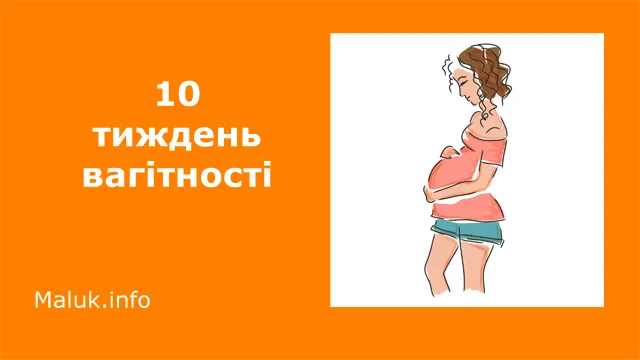Pregnancy calendar: 10th week of pregnancy
Pregnancy calendar by week. An experienced doctor tells how a child develops in the womb and what changes occur in the pregnant woman’s body. All the most important things about the 10th week of pregnancy
Changes in your body:
Therefore, the tenth week of pregnancy is the first holiday, because the baby inside you is now not called an embryo, but a fetus. What does it mean? That the most critical time, when harmful factors are most dangerous, has been overcome . A little person is growing inside you!
If you haven’t gone on a maternity shopping spree yet, now is the time to do it! After all
your bust should be at least a size bigger and your waist should have space. Your waist should now be somewhat rounded, because the size of the uterus, in which the baby is maturing, is already about the size of a grapefruit. In the following months, loose dresses or pants with a wide elastic band will come in handy, which will delicately support the pregnant belly.
How does the baby grow?
From the tenth week, the baby is called a fetus, it is already a small person. During the next second and third trimesters of pregnancy, the development and growth of the organs and systems of the child’s body, already established in the embryonic period, will take place.
The baby’s head takes on a rounded shape, the neck appears. Eyes are formed on the face, which are covered with eyelids. The ear, not yet fully formed, is on the side. The nose has a well-defined tip only. Twenty teeth are placed in the oral cavity. The baby swallows the amniotic fluid.
The body lengthens and begins to occupy 2/3 of the size of the child. By the end of the week, the baby should be up to 5 cm. A spine is formed, ribs can be easily distinguished. Arms and legs bend, fingers without webbing. The baby moves, – makes movements as if jumping, digging – but it is still invisible to you.
In boys, the gene located on the Y chromosome triggers the production of testosterone, which will switch the development of the genitals to the male type. However, visually, boys do not differ from girls.
The yolk sac becomes unnecessary, because now the liver, spleen and bone marrow take over the function of blood cell formation.
The placenta takes over the function of synthesizing hormones that support pregnancy. The umbilical cord contains the umbilical vein, which carries oxygen and nutrients from the mother to the baby, and two umbilical arteries, which take away carbon dioxide and waste products from the baby.
Author: Olga Letnyanchyk, doctor
Read also:
– Pregnancy calendar: from 1 to 40 weeks

